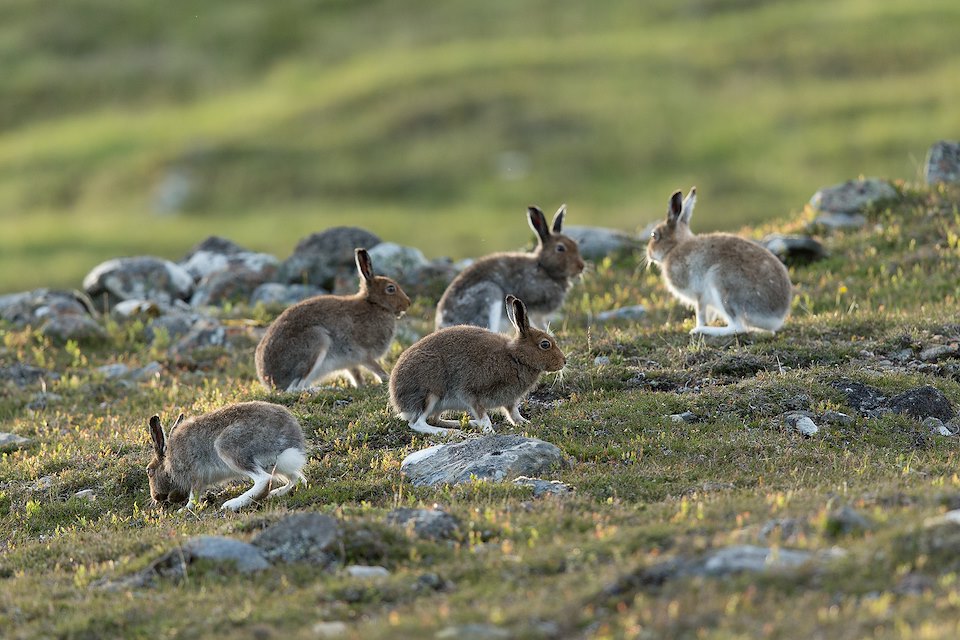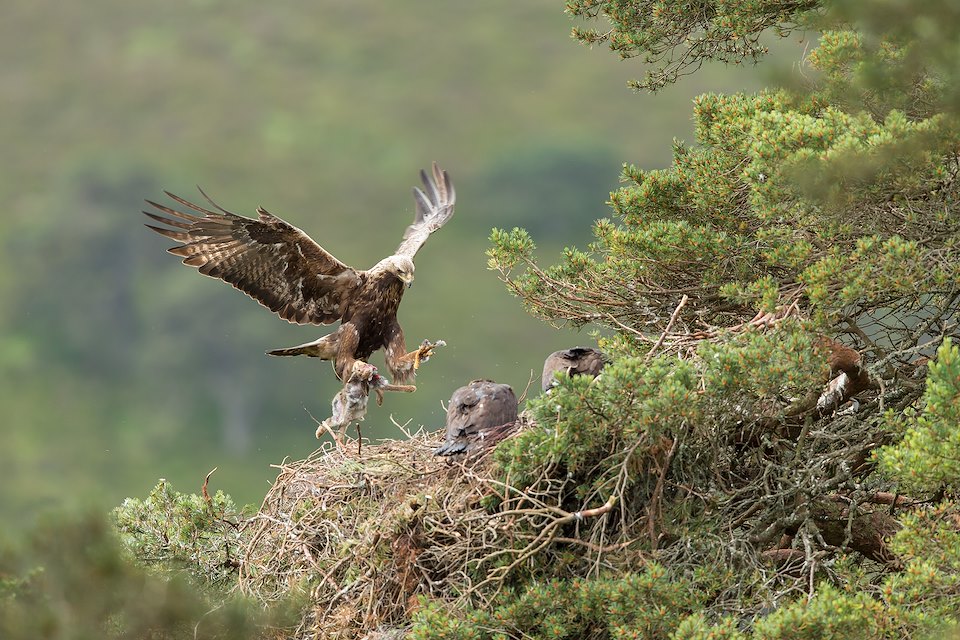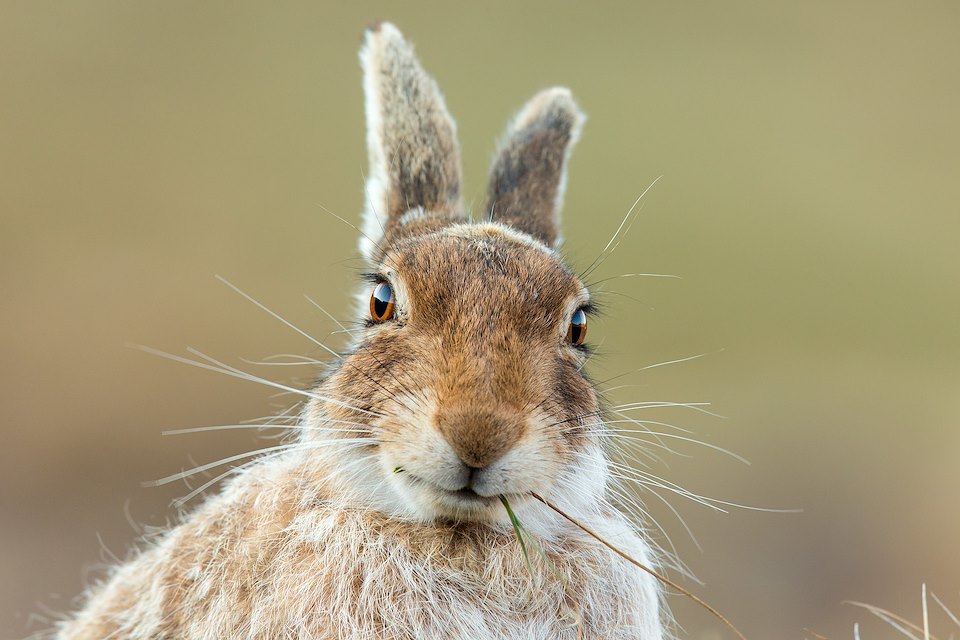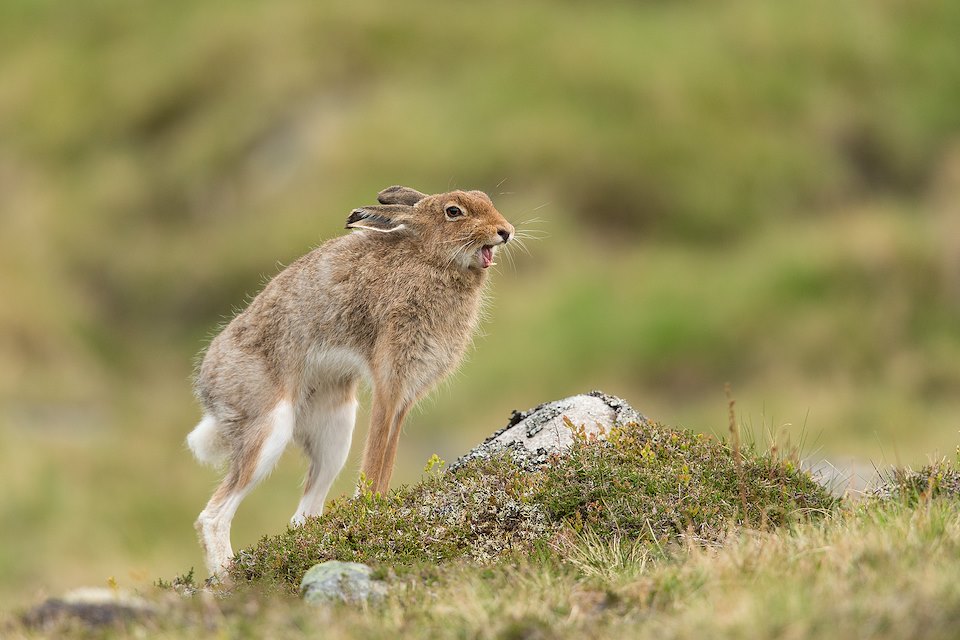Hunted
The mountain hare is Britain’s only fully native lagomorph, and 99% of the British population lives in Scotland, but there’s a lot we still don’t know about these enigmatic upland mammals.

The mountain hare is Britain's only fully native lagomorph, and 99% of the British population lives in Scotland.
Exactly how many this might be is hard to say, for two reasons. Hare populations are notoriously difficult to count, and they can vary greatly from year to year. In fact in Scotland, the population appears to be at least partly cyclical, with peaks and crashes occurring on average every nine years. The causes aren't precisely known – in fact there's a lot we still don't know about these enigmatic upland mammals.

So let’s start with what we do know. Mountain hares are tough. Unlike rabbits, hares rarely use burrows for breeding or shelter, and rely on athleticism and camouflage to avoid predation. They’ll eat almost any plant material, including the tough woody stems that most other herbivores avoid. In summer, they find life relatively easy. Food is plentiful, and even on expanses of open moorland, there is shelter to be had in rocky outcrops and natural hollows, or among the woody stems of heather. Winter is a different matter, but while other upland wildlife heads for lower ground or flies the country altogether, the hares remain. And despite the harsh conditions, they manage to gain weight throughout the winter, reaching peak condition in time to tackle the rigours of courtship and breeding, which begins in January. Being remarkably unfussy about their diet is just part of the story: the hares also ensure that no energy is wasted. At rest they adopt a ball-like posture, with fur fluffed up for maximum insulation, and reduce blood flow to the extremities where it might become chilled. Their ears are shorter than those of the lowland brown hare – reducing the amount of heat radiated from their warm surfaces.

Young hares, or leverets, are born in the open. Unsurprisingly the first few weeks are particularly dangerous. Foxes, stoats and even weasels take a severe toll on babies, which are left unguarded for long periods while their mother feeds. But the survival prospects of those that live a month or more improve significantly – they are supremely athletic, with an instinctive tendency to sprint uphill at speeds most hunters find difficult to sustain. In fact the only significant wild predators of adult hares are golden eagles. The hares’ first defence against predation from above is invisibility. Even in the open, they’re tough to spot until they move – their grey-brown fur is an excellent match for upland vegetation. Come winter, the summer coat is shed, and the pelage that replaces it has finer hairs, more densely packed than in summer and most strikingly, tending to lack pigment and thus appearing bluish white. As long as snow lies on the ground, the hares’ camouflage is perfect again. They are also wise enough to rest on uneven ground – in low winter sun, even a perfectly camouflaged animal may cast a long shadow that would pick out its position to aerial predators like a giant pointing finger. The system works as long as the switch coincides with the arrival and disappearance of snow cover.


Because hares provide the most significant food resource for golden eagles, the peaks and troughs of hare populations can have a significant knock-on effect on eagle numbers, and especially on breeding success in a given year. In extreme years, the hare population may be reduced to as little as 10% of its maximum numbers. Though these losses are dramatic, as long as natural recovery is not hampered, populations of both hares and eagles can bounce back rapidly. However, an expanding body of evidence including data gathered by the BTO and Game and Wildlife Conservation Trust (GWCT), and an extraordinary 60-year survey of hare numbers by veteran Scottish ecologist Adam Watson, indicate that the species is undergoing a sustained decline. On some moorland estates, where traditional management involves predator control and rotational burning of heather, numbers sometimes boom, but many former stronghold areas have been planted with trees and no longer support any hares at all, and in many areas where hares do still live, their numbers appear to be down.
In extreme years, the hare population may be reduced to as little as 10% of its maximum numbers.

Mountain hares have been killed for food and sport for centuries, but the results of surveys carried out in 1995-6 and 2006-7 suggest the total number killed increased by 32% and that that the reasons for the killing are changing. In 1995/6, 60% of hares reported killed were shot for sport. Ten years later that figure had declined significantly to 40%, and 50% were recorded as being culled for management purposes. The main reason given for controlling hare numbers is the belief that high density hare populations threaten red grouse stocks by competing for food and acting as a reservoir for a tick-borne disease called louping ill. However a closer look at the evidence suggests that culls are only likely to succeed in boosting grouse numbers where other species that also harbour ticks (including deer and sheep) are also rigorously controlled or excluded. High profile conservationists have condemned the culling, and Scottish Natural Heritage, the Scottish Land & Estates and GWCT have urged restraint in the use of large-scale culls. Scotland has an obligation under EU law (Habitats Directive Annex V) to ensure that mountain hares are maintained at a favourable conservation status, which in common parlance means making sure they do well enough that the species will continue to thrive here in perpetuity. The current decline suggests this obligation is not being adequately met.


The hares may have another problem. Painstaking studies made in the 1960s and 70s suggest that the date when the hares began their annual moult into winter white is fixed at a given site. There is some variation with altitude, and the return to a brown coat can be accelerated if spring is unusually early or warm, but the start date seems immutable. Recent studies of American snowshoe hares suggest the same thing. With annual snow cover in temperate zones predicted to reduce by as much as two months by 2100, hares could be spending much more of their time with less than perfect camouflage. The impact of this potential mismatch is yet to be seen, but it adds to the list of concerns for the species. There’s very good reason for developing more reliable methods for monitoring this charismatic member of Scotland’s upland fauna.
This essay is adapted from a feature previously published in BBC Wildlife magazine.


